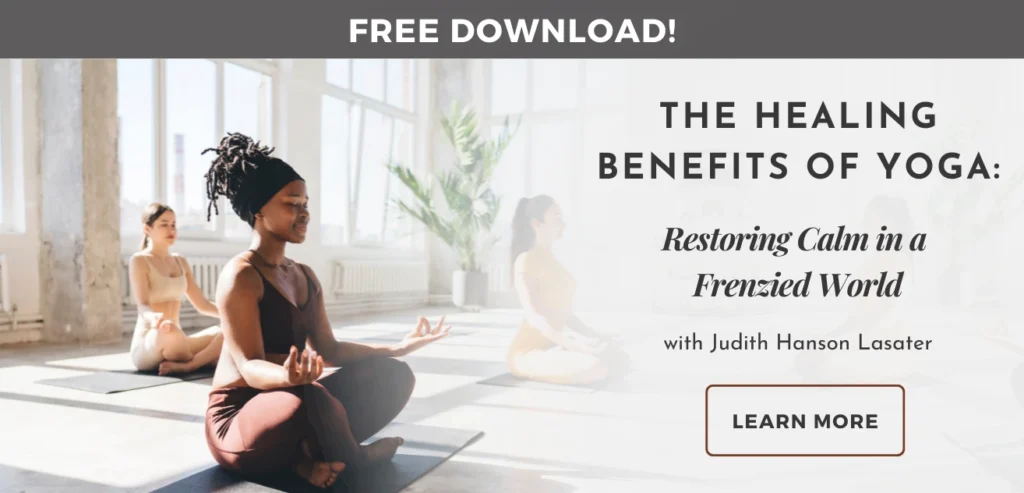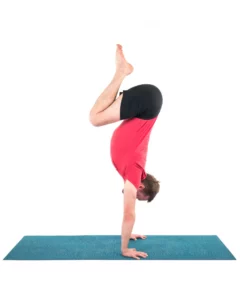Arm Balance Poses: Just for Fun or Yoga Practice Staples?
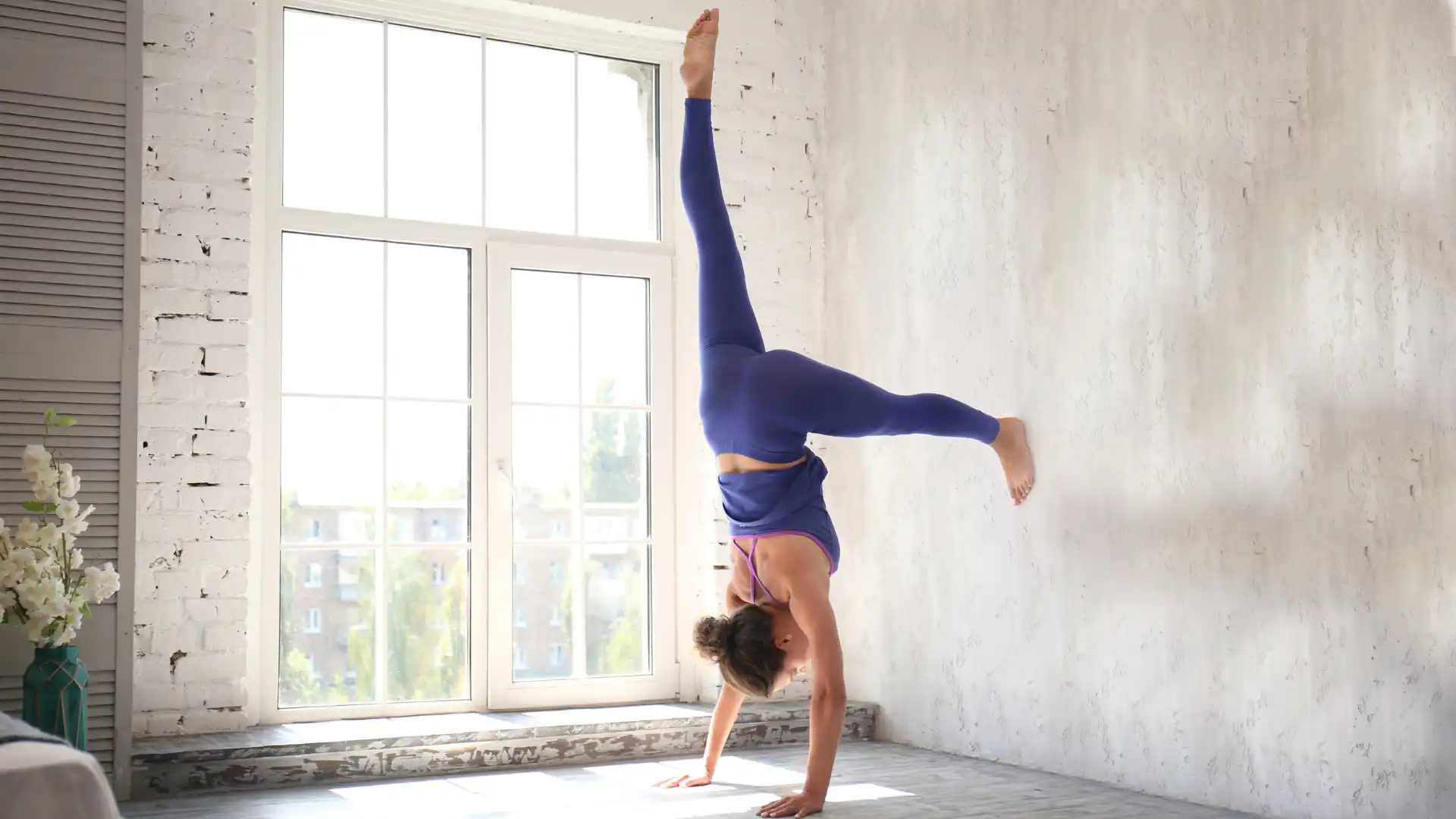
How often do you walk on your hands? Some Instagram feeds will have you believe that mastering a handstand is an essential indicator of progress in yoga. But the reality is that we were not designed to carry our body weight on our hands. This becomes obvious once you compare the structure of the hip joint (meant to be weight bearing) and shoulder joint (not meant to be weight bearing).
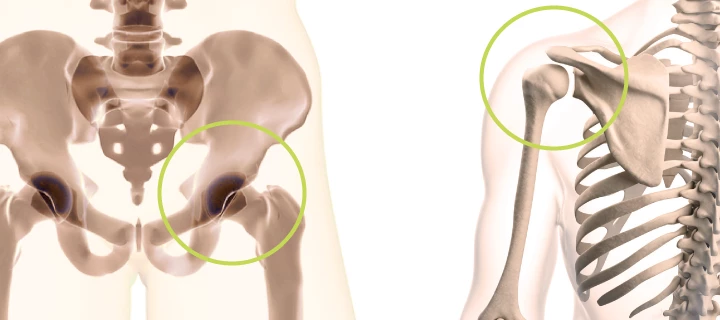
The head of the femur sits deep in the hip socket, which makes the hip joint more stable and, as a result, less mobile. The shoulder joint looks more like a shelf: instead of the bony structures, the shoulder joint must be held together by muscles, tendons, and ligaments. Because of that, the mobility of the shoulder joint is much greater, while at the same time it is not nearly as stable as the hip joint.
This means that all those fancy arm balances are not the must-haves in your yoga practice, but rather reflect the concept of sharira samyama, which means “mastery of the body.” It has elements of entertainment and performance in it (think acrobats in Cirque Du Soleil).
This doesn’t mean that us regular folks can’t get some benefits from arm balances. They can help us overcome fear, work on physical self-development and give us a sense of strength and accomplishment. Those are all good things, as long that sense of achievement doesn’t overshadow everything else. We also need a clear head when it comes to evaluating the risks of arm balances. For some of us, the risks far outweigh the benefits.
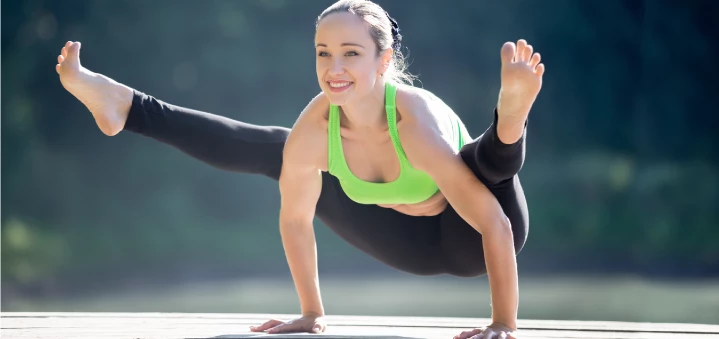
In arm balance postures the weight of the body is supported by the arms and hands, which means that arm balances both require and develop strength in the arms, shoulder girdle and wrists. Most arm balances also require and develop core strength. This means that if you have weaknesses or injuries in the above areas you should think very carefully before attempting to balance on your hands. In fact, those with wrist injuries should forget about arm balances altogether (at least until those injuries heal completely). The risk is just too great.
Those with shoulder injuries can sometimes benefit from shoulder strengthening moves, but partial weight-bearing poses (like Plank Pose, for example) usually work better. If your core is weak you run the risk of falling out of the balance pose onto your head, which generally isn’t a good idea. So you might be better off starting with the poses that are closer to the ground and require only a slight lift off the floor to check how your body handles such maneuvers.
To sum it up:
- The ability to do arm balances is not an indicator of the quality or effectiveness of your yoga practice. Even if you never, ever do arm balances you can still have a deep, fulfilling and potent yoga practice.
- Feel free to experiment with arm balances for fun, but be sure to access the risks first.
- Before you attempt to do any arm balances check the strength and stability of your core, shoulders, arms, and wrists. If any of those are weak, you will need to strengthen them first with other poses, over time.
- Always spend adequate time warming your neck, shoulders and upper back before you attempt to do arm balances, but don’t tire them out too much, otherwise, you won’t have energy left for your arm balances.
- Do not do too many arm balances in the course of one practice. Three is the recommended maximum, and those should place different kinds of loads on your shoulders and be spread out throughout the practice (not back-to-back).
- Be sure to compensate all the same areas after each arm balance. We call it “mobilizing the joints” which means moving the arms and/or wrists freely after bearing weight.
If you choose to play with arm balances, please remember: these poses are mostly used for the purpose of body mastery and creating a sense of accomplishment, rather than as useful working tools to deal with your current challenges.
If avoiding injuries and correct alignment is important to your practice – Study with Olga Kabel and YogaUOnline – Avoiding Yoga Injuries: Common Alignment Mistakes with Backbends and Lateral Bends.
Also, read...
Which Is the Best Way to Come Into Triangle Pose?
Cat-Cow Pose (Marjaryasana-Bitilasana)
2 Restorative Yoga Poses to Calm Your Body and Mind
Related courses

Educated as a school teacher, Olga Kabel has been teaching yoga for over 14 years. She completed multiple Yoga Teacher Training Programs but discovered the strongest connection to the Krishnamacharya/ T.K.V. Desikachar lineage. She had studied with Gary Kraftsow and American Viniyoga Institute (2004-2006) and received her Viniyoga Teacher diploma in July 2006, becoming an AVI-certified Yoga Therapist in April 2011. Olga is a founder and managing director of Sequence Wiz— a web-based yoga sequence builder that assists yoga teachers and yoga therapists in creating and organizing yoga practices. It also features simple, informational articles on how to sequence yoga practices for maximum effectiveness. Olga strongly believes in the healing power of this ancient discipline on every level: physical, psychological, and spiritual. She strives to make yoga practices accessible to students of any age, physical ability, and medical history, specializing in helping her students relieve muscle aches and pains, manage stress and anxiety, and develop mental focus.


